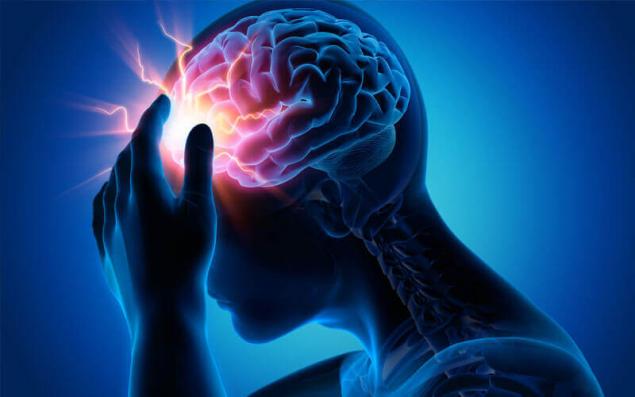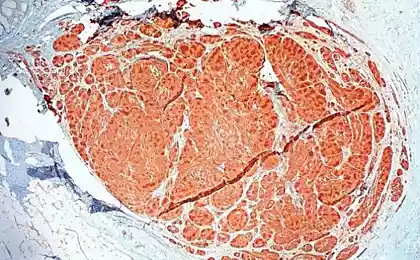566
10 facts about multiple sclerosis
1. Multiple sclerosis is a very common disease. In the world hurts them more than 2 million people. In Russia – 150 thousand. Women get sick more often, but adverse progressive form is more common in men.
2. The words "multiple sclerosis" there is no hint of human absent-mindedness or forgetfulness, which in everyday life is called sclerosis. Absent-mindedness in our case (or rather, hopefully, in the case that you, the readers, will not affect) means the prevalence of foci of the disease in the brain and spinal cord. No wonder the English language, the disease is called multiple sclerosis (MS multiple).

3. For early diagnosis of the disease use the so-called McDonald criteria, linking the frequency and strength of exacerbations of the disease and the clinical manifestations of the lesions of multiple sclerosis and MRI data. But for the actual MRI diagnostics used other criteria — the criteria Fazekas and criteria Party.
4. There are many types of multiple sclerosis — relapsing-remitting from (a disease with exacerbations and remissions, but no degradation) before the disease Marburg (not to be confused with Marburg fever, in the event the PC is very fast flowing form that kills in a few months).
5. At least three diseases were previously considered to be forms of multiple sclerosis, but now they are considered independent, concentric sclerosis of Balo, acute encephalomyelitis and that was the clue (neuromyelitis Optica,).

6. One of the first almost certainly patients with this disease was the Dutch Holy Lidwina of Schiedam (1380-1433), revered as the sick and those struck by severe illness, donates his suffering for others. Lidwina 35 years spent without movement, and described in the biography of her symptoms are very typical for multiple sclerosis.
7. Clinical manifestations of multiple sclerosis was first described by a Scottish physician, Robert Carswell (1793-1857) in 1838. But he never classified it as a separate disease, although the scars that leaves the sclerosis in the brain stem and spinal cord he drew. Had to wait another three decades, until the disease came from Jean-Martin Charcot. Interestingly, at least some kind of neurological disease without attention cost?
8. His contribution to the study of multiple sclerosis made by the famous photographer of the late nineteenth century Edward Muybridge. He began to explore with pictures of the movement and took the pictures of the individual phases of motion and motion animation from photos. In 1887 he made a series of photographs illustrating the difficulty of movement from the woman, the patient with multiple sclerosis.
A series of movements the patient with MS
9. Sometimes it was suggested that the heroine of a famous painting by the American artist Andrew Wyeth "Christina's World", written in 1948, was sick with multiple sclerosis, however at a recent conference in the United States she "put" the diagnosis of the syndrome Charcot-Marie-tooth (motor-sensory neuropathy).

"Christina's World"
Also interesting: diseases of civilization: what to do and who to blame
Parkinson's disease: 20 years before it will be too late
10. In 1917 in the UK was published "Journal disappointed man", in fact, blog the beginning of XX century, signed by Wilhelm Nero Pilate Barbellion (W. N. P. Barbellion). Now this work is forgotten, but then it was valued at par with the best works of Kafka and Joyce. In this work, who took this pseudonym Briton Bruce Frederick Cummings described his life and struggle with illness. In fact, it was the first ever blog of a terminally ill person.
One of the last entries in the "Diary" was this: "I'm only twenty-eight years, but I have stretched these a few years reasonable long life: I loved and married, I have family; I have wept and enjoyed, struggled and overcome, and when the hour comes, I'll be happy to die." Cummings died at age 30 in 1919.published
Author: Alexey Paevskiy
P. S. And remember, only by changing their consumption — together we change the world! ©
Source: www.neurotechnologies.ru/articles/10facts_MS
2. The words "multiple sclerosis" there is no hint of human absent-mindedness or forgetfulness, which in everyday life is called sclerosis. Absent-mindedness in our case (or rather, hopefully, in the case that you, the readers, will not affect) means the prevalence of foci of the disease in the brain and spinal cord. No wonder the English language, the disease is called multiple sclerosis (MS multiple).

3. For early diagnosis of the disease use the so-called McDonald criteria, linking the frequency and strength of exacerbations of the disease and the clinical manifestations of the lesions of multiple sclerosis and MRI data. But for the actual MRI diagnostics used other criteria — the criteria Fazekas and criteria Party.
4. There are many types of multiple sclerosis — relapsing-remitting from (a disease with exacerbations and remissions, but no degradation) before the disease Marburg (not to be confused with Marburg fever, in the event the PC is very fast flowing form that kills in a few months).
5. At least three diseases were previously considered to be forms of multiple sclerosis, but now they are considered independent, concentric sclerosis of Balo, acute encephalomyelitis and that was the clue (neuromyelitis Optica,).

6. One of the first almost certainly patients with this disease was the Dutch Holy Lidwina of Schiedam (1380-1433), revered as the sick and those struck by severe illness, donates his suffering for others. Lidwina 35 years spent without movement, and described in the biography of her symptoms are very typical for multiple sclerosis.
7. Clinical manifestations of multiple sclerosis was first described by a Scottish physician, Robert Carswell (1793-1857) in 1838. But he never classified it as a separate disease, although the scars that leaves the sclerosis in the brain stem and spinal cord he drew. Had to wait another three decades, until the disease came from Jean-Martin Charcot. Interestingly, at least some kind of neurological disease without attention cost?
8. His contribution to the study of multiple sclerosis made by the famous photographer of the late nineteenth century Edward Muybridge. He began to explore with pictures of the movement and took the pictures of the individual phases of motion and motion animation from photos. In 1887 he made a series of photographs illustrating the difficulty of movement from the woman, the patient with multiple sclerosis.
A series of movements the patient with MS
9. Sometimes it was suggested that the heroine of a famous painting by the American artist Andrew Wyeth "Christina's World", written in 1948, was sick with multiple sclerosis, however at a recent conference in the United States she "put" the diagnosis of the syndrome Charcot-Marie-tooth (motor-sensory neuropathy).

"Christina's World"
Also interesting: diseases of civilization: what to do and who to blame
Parkinson's disease: 20 years before it will be too late
10. In 1917 in the UK was published "Journal disappointed man", in fact, blog the beginning of XX century, signed by Wilhelm Nero Pilate Barbellion (W. N. P. Barbellion). Now this work is forgotten, but then it was valued at par with the best works of Kafka and Joyce. In this work, who took this pseudonym Briton Bruce Frederick Cummings described his life and struggle with illness. In fact, it was the first ever blog of a terminally ill person.
One of the last entries in the "Diary" was this: "I'm only twenty-eight years, but I have stretched these a few years reasonable long life: I loved and married, I have family; I have wept and enjoyed, struggled and overcome, and when the hour comes, I'll be happy to die." Cummings died at age 30 in 1919.published
Author: Alexey Paevskiy
P. S. And remember, only by changing their consumption — together we change the world! ©
Source: www.neurotechnologies.ru/articles/10facts_MS























